Education: Schools were crucial then and now – Part 6
This is the sixth part in a series of 12 monthly essays over the next year leading up to Columbia’s 50th birthday celebration next June. It ran first in The Business Monthly, circulating in Howard and Anne Arundel counties, and after that is being published here on MarylandReporter.com and by our partner website, Baltimore Post-Examiner.
The copyright is maintained by the author and may not be republished in any form without his express written consent. Comments and corrections are welcome at the bottom.© Len Lazarick 2016
By Len Lazarick
As I walked into the Harriet Tubman building in the fall of 1975 to cover my very first meeting of the Howard County Board of Education, it would be difficult to underestimate how little I knew about school boards or public schools or even the building I was entering.
In my 18 years of education, I had never attended a public school, if you don’t count two night courses in accounting at Catonsville Community College.

As I made my way down what I recall as a rather dim corridor to what seemed like a converted classroom where the board met, I can’t say whether I really had any notion what the building had looked liked just 12 years before as Jim Rouse’s company was beginning to purchase thousands of nearby acres that would become Columbia.
Back in 1963, the students walking through these same doors and down the corridor of this junior-senior high school were all “Negroes.” No accident that the county’s lone “Negro” high school was located on Freetown Road, one of the “colored” neighborhoods in rural Howard County where the freed folk lived.
That’s the kind of school system Jim Rouse and his workgroup experts at Howard Research and Development (HRD), the development arm of the Rouse Co., spent days debating the following year as they planned every aspect of the new community as a “garden for growing people.”
“Education was obviously a crucial element in the growth process,” wrote Wallace Hamilton, Rouse’s director of institutional planning, in a June 1964 memo. “But there was an additional reason for an intense interest in education.” Rouse wanted to attract lots of research and development firms to the planned business parks.
“The employees in such industries were in general well and stably paid, well educated and good prospects for both housing and energetic community development,” Hamilton wrote. “Such people took their own education seriously — and their children’s education seriously.”
“In the field of education, HRD’s moral and economic ambitions coincided,” he said.
Not Fertile Soil in a Rural County
The Howard County school system was not exactly fertile soil. Ten years after the U.S. Supreme Court declaring “separate but equal” schools unconstitutional, it was still the in the process of desegregating. Overall, it ranked 15th in the state in per pupil spending, $380 a year; neighboring Montgomery County was the highest at $505.
HRD hired an education consultant, Christopher Jencks, who proposed a much more innovative and individualized approach to schooling. He had little faith in the current school board or its administrators.
The Jencks study was “the beginning irritant or stimulant for change in the school system,” Mary Hovet, longtime assistant superintendent for curriculum, would write 30 years later.
Over the course of months, Jim Rouse, his team and consultants argued how to create a school system for the highly educated workforce they were hoping to attract. They mulled creation of a separate school district funded by extra taxes on the town’s residents; they considered private schools or a mix of both. Ultimately they realized that this wasn’t going to work — politically or practically.
At the same time, they found the administrators and the school board remarkably receptive to their ideas. The board “felt that the new town development could be used as a lever to raise the level of the entire county school system,” wrote Hamilton. The five-person board, while appointed by the governor, was essentially hand-picked by Howard County’s lone state senator, James Clark, Jr., who had chosen some progressive nominees, including the first black woman on the board.
The school system itself used a federal grant approved by the Maryland Department of Education to hire its own outside consultants to recommend a 10-year plan. With the tremendous growth expected from a blossoming Columbia, the two professors it hired proposed that schools be physically adaptable and autonomous, with principals and teachers allowed to experiment. They emphasized individualized instruction, team teaching, independent study and taking advantage of new technologies.
The board adopted their recommendations, leading to a proliferation of open space schools designed for team teaching, putting them on the cutting edge of what was a national trend.
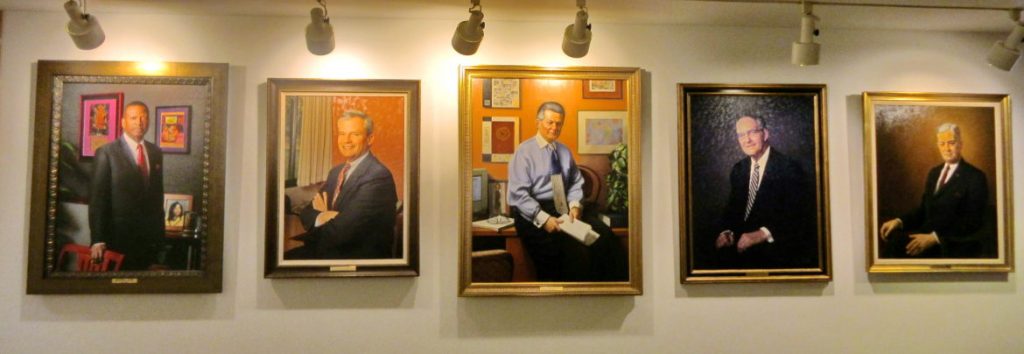
A Superintendent for the Long Term
To preside over this immense change and growth, in 1968 the board hired M. Thomas Goedeke (go-deh-KEY), a 29-year veteran of Baltimore City schools.
When he arrived, Howard County had 13,000 students in 21 schools. When this imposing man with a no-nonsense demeanor left 16 years later in 1984, the county had nearly twice as many students and 49 schools.
“It was a very exciting period,” Fred Schoenbrodt told the Baltimore Sun for its January 2000 obituary of Goedeke.
Schoenbrodt, a political ally of Sen. Jim Clark, served on the Howard school board from 1962 to 1978, including 12 years as its president. “It was the beginning of Columbia, when the school system was pretty much rural. That’s when we became a suburban system overnight.” Schoenbrodt and Goedeke were partners for those first 10 years as Columbia got off the ground.
In 1967, John Yingling was in his 18th year as superintendent of Howard County schools, in which he had spent his entire career. The 1968 annual school system report dedicated to the “Yingling years” noted that, in 1949, some schools were still one-to-four room, wood-frame structures. For one of them, the Ellicott City Colored Elementary School, Yingling had an outdoor pump installed to make up for its lack of running water.
In 1967, with all those consultants looking over his shoulder and the Columbia influx coming, he and the board had finally finished desegregating the schools, putting blacks and whites together in the same classrooms. They had restructured the system from the old 6-3-3 model with junior and senior high schools, to the 5-3-4 grade model with three-year middle schools, adding half-day kindergarten on the front end.
What Yingling kicked off, Goedeke brought to a new level.
“He was responsible not only for building but also for staffing and seeing that they were operating and doing the jobs that they were supposed to do,” Schoenbrodt said. “A system that doubles in size practically overnight, that takes a lot of doing.”
Goedeke and Schoenbrodt, both of that firm but kind-hearted German stock that so reminded me of my mother’s family, were my educators in the ways of the school system. My reporting likely reflected their establishment view, and I spent more time in the boardroom than I did in the schools. The action there centered, as it often does today, on budgets, teacher contracts and administrative policy.
School construction was always top of mind. Gov. Marvin Mandel’s promise to pay for constructing all the new schools in Maryland was being overwhelmed by pent-up demand from suburban growth. From 1971 to 1975, the state approved $1.2 billion for school buildings — the equivalent of $5.4 billion in today’s dollars. Goedeke and Schoenbrodt were stunned when they attended a Board of Public Works meeting in late 1975 and heard Mandel describe the state funding as a “five-year program.”
Goedeke said at the time that his understanding was that the program would go on “forever and ever.”
Goedeke and Schoenbrodt moved Howard County schools in new and exciting ways that were experimental, even faddish. Epitomizing that approach was Wilde Lake High School, Columbia’s first high school, which represented exactly what the consultants were talking about.
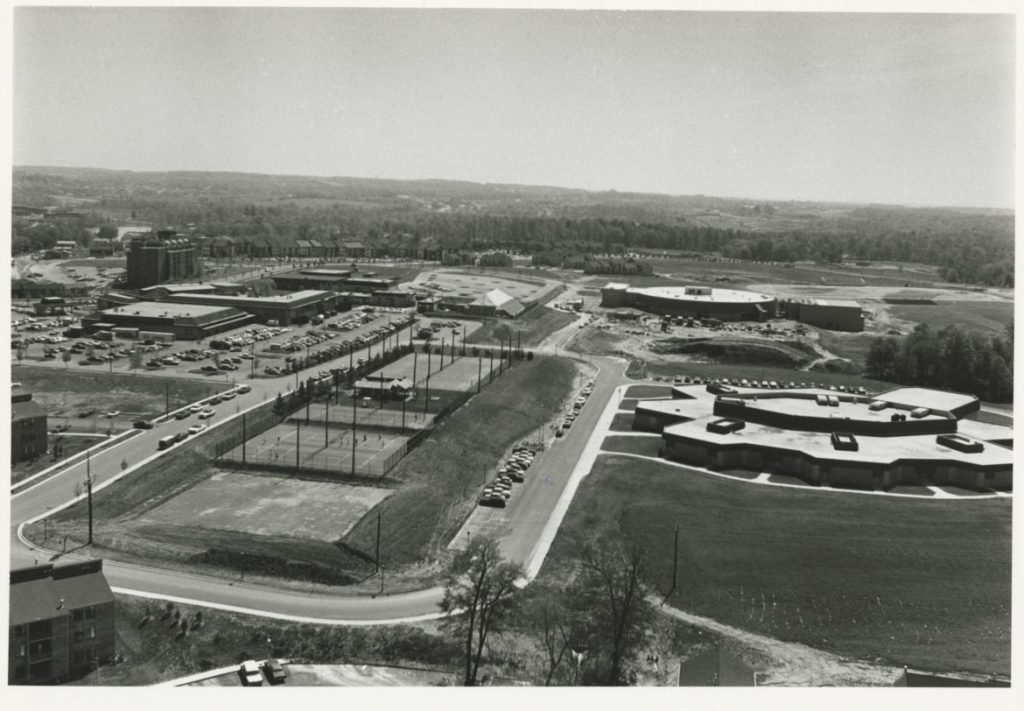
New School for a New Town
If Columbia was a radical departure from haphazard suburban sprawl, Wilde Lake High was a radical departure from the traditional high school, both physically and philosophically.
The center of the interior of the school was a “donut,” with the media center at its core. “Because the Media Center is the focus of Wilde Lake High School,” a student handbook explained as the school was about to open in September 1971, “much of its program will be devoted to meeting individual requests for information — whether its form be book, visual, magazine, tape or television.”
The students were expected to learn at their own pace, guided by teachers.
“It is the hope of the faculty that the curriculum and the related experiences will provide each of you with the inspiration and competence to discover who and what you are.”
One of the guiding principles was “the knowledge that this school is committed to making failure obsolete.”
In fact, failure was impossible, except with special permission for a rare course. There were only three grades: A, B or C. If students didn’t master the minimum requirements of a course, they kept working till they did master the material enough to get them a C.
The grading system was so novel that principal John Jenkins sent a special letter home at Thanksgiving that first year explaining it. The setup of the curriculum was so extraordinary that the school also developed a letter to explain to college admissions offices how to decipher the student transcripts.
The contents page of the handbook ended with a famous quote from poet Robert Frost:
“Two roads diverged in a wood, and I —
I took the one less traveled by
And that has made all the difference.”
The Less Traveled Path
Some students thrived on this less traveled path through the thicket of high school adolescence; others got lost in the woods.
As an education student at the University of Maryland College Park, Eric Ebersole got his student teaching experience in math at Wilde Lake High, and joined the faculty there in 1980. He stayed for 22 years, teaching mathematics and computer science, then went on to head departments in newer high schools.
“There was something uniquely cool about Wilde Lake,” said Ebersole, now a member of the House of Delegates whose District 12 includes Wilde Lake. “The kids there had a sort of open-mindedness. It was very refreshing to be around them.”
Novelist Laura Lippman resurrected her 1970s high school experience in the sometimes dark novel Wilde Lake, out last spring. In July, she reminisced more personally in the British Daily Mail:
“When I decided to write about my old high school in a novel, I realised there was much to admire. Yes, it was crazy to expect adolescents to make sound decisions about how to allocate their time. However, students who were motivated could soar at Wilde Lake. It was a great place to be an outlier. There were quite a few success stories, now that I began to take notice.”
Lippman’s Daily Mail piece — headlined with Brit hyperbole “My wild school days at Hippie High” — includes great photos of her time there, and even the photo spread about the school that ran in Life magazine, typical of the national attention Columbia and its institutions received in its first decade.
Successes or no, Wilde Lake itself, its design or its programs, was duplicated nowhere else in Howard County. By the late 1980s, it went to standard grading, and in 1994, just 23 years after it opened, it was torn down and replaced by a more traditional school — though interior windows gave its classrooms some open space feel, Ebersole said. The attached Jim Rouse Theatre for the Performing Arts was deliberately constructed as not only a school auditorium, but a community venue for arts production.
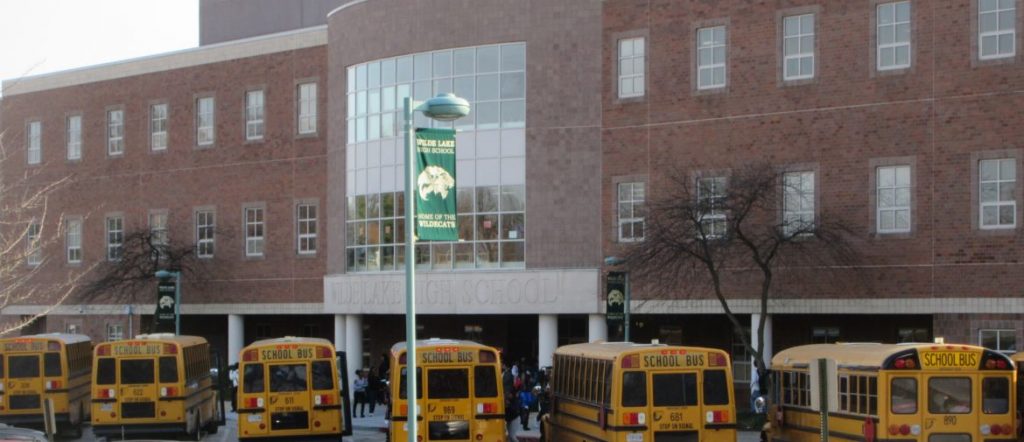
The Plan vs. Reality
Wilde Lake High was not a model for other high schools in Columbia or elsewhere, but the way the three levels of schools were planned in Columbia’s first village was the pattern Rouse and HRD expected to be followed in future villages.
Schools were seen as essential building blocks of community. Each neighborhood would have an elementary school, with most of the children able to walk to school. The elementary schools would feed into a middle school located near the village center, and these children would then move on to the nearby high school, also in the village center.
That was the pattern followed again in Oakland Mills, the first village east of Route 29: Three neighborhoods, three elementary schools; an Oakland Mills Middle School; and next to it on a connected campus, Oakland Mills High School. OMHS opened in 1973, two years after Wilde Lake High, but with a more traditional building, though with an initial open space design.
In a similar time frame, the schools in the Village of Harper’s Choice were opening. Harper’s Choice Middle School opened in 1973, and then came …
“Wait a minute, not so fast,” said the school board.
Sue Buswell was appointed to the Howard County Board of Education in 1973 as it began transitioning to an elected board, running for the seat in 1976 and then for reelection in 1980 before getting elected to the House of Delegates in 1982.
In those 10 years, as enrollment was ballooning, “we were constantly redistricting,” building 13 new schools and renovating 12 others, she recalled.
“Rouse was marketing the high schools” as part of the planned community, but he was not providing as much land as the school system wanted, she said. “We were not building two-story buildings,” as Wilde Lake High was.
Buswell, who lived in Elkridge at the time, said, “We have a county-based school system, and we felt it was important that Columbia be part” of that system.
“It was important that schools be placed where we wanted them placed.”
The Harper’s Choice residents felt entitled, and so did the developer. This was the Columbia plan, after all.
Not factored into the plan was the growing resentment that Columbia was getting all the goodies. Residents outside the town “went to look at a Columbia school, and they felt, ‘We’re so deprived,’” Buswell said.
The next high school to be built was Hammond, near the King’s Contrivance Village Center, serving that very disjointed village that stretched almost from Route 29 to beyond I-95. Then came Centennial on Centennial Lane, not the Harper’s Choice High.
The Village of Long Reach was a special case, with the old Howard High just across Route 108 from the Phelps Luck neighborhood. Originally opened in 1952, Howard has had four additions over the years, and five renovations. Long Reach didn’t get its own high school till 1996, as its fourth neighborhood grew.
Not Every Neighborhood Gets an Elementary
An additional problem for the Columbia concept of school sites was that the neighborhoods were not always generating enough children to fill the schools that were built. This was a problem for Longfellow, one of the earliest Columbia neighborhoods, but the school board chose to close Faulkner Ridge Elementary in Wilde Lake instead, turning it into a staff development center.
“Faulkner Ridge was an excellent school, a place for our kids to grow up,” one parent who lived across from the school told the Washington Post in 1983. “All we want is for our neighborhood to have its own school. We thought that’s what Columbia was about.”
The competing goals of the developer and the school system were best symbolized by the sign that long advertised a potential school site in the Hopewell neighborhood of Owen Brown. The school system chose to renovate the nearby Guilford Elementary School instead; the sign is gone and golfers sometimes still use the grass-covered acres next to the Hopewell pool as a driving range.
On the other side of Owen Brown, my own daughters were able to walk to what was unique in the county — an elementary school (Dasher Green) housed in the same building as a middle school (Owen Brown).
I didn’t spend much time in the classrooms, if parents were invited, back in the 1980s and ’90s. I do vividly recall being unhappy with the Whole Language approach to teaching reading and writing. Phonics was abandoned, and correct spelling in writing assignments was considered a curb on expression. Because I did words for a living, I was banned from touching homework assignments where I couldn’t fix spelling, grammar or punctuation.

Goedeke Leaves, Hickey Enters
In 1984, with Goedeke retiring, the school board hired Michael Hickey.
In backgrounds, they were very different. Goedeke was a Baltimore native who had risen through the ranks as a teacher, vice principal, counselor, principal and central office administrator before becoming the No. 2 man in Baltimore City schools, accumulating a series of degrees over the years as many educators do.
Hickey was from Washington state and had spent just two years as an English teacher, got his bachelor’s, master’s and Ph.D. in quick succession from the University of Washington, became a deputy superintendent, then served as superintendent of St. Louis Park, a small school system outside of Minneapolis for eight years before Howard County hired him.
“I really listened to principals, and I had some good principals to listen to,” said Hickey, explaining how he dealt with his lack of in-school experience.
Like Goedeke, Hickey was liked and respected and would stay as head of Howard County schools for 16 years, as other large, urbanizing systems saw faster turnover in the top job.
In a recent interview, Hickey’s assessment was blunt. Goedeke had managed “the transition from a rural mudhole of a system. He deserves a lot more credit than he got.”
But in his first annual report, Hickey acknowledged the challenges as well. “Over time it seems as if the purpose of schools has become that of doing everything for everybody. The years of affluence have encouraged us to take on every societal task, tackle the ills of society, and even attempt to solve our national problems by the vehicle of the public schools.”
While Howard County schools grew by leaps and bounds in the Goedeke years, the largest and fastest growth actually came under Hickey. In 1984, the year he came, enrollment stood at 24,252, with 41 schools; the year he left there were 44,525 students in 65 schools — 20,000 more pupils in 24 more schools, adding an average of 1,250 students a year, a growth paced unmatched before his tenure or since.
In 1990, the new statewide report cards from the Maryland State Department of Education confirmed that the students in Howard County scored the best in the state, a status that would continue for years, with some back and forth between Howard and Montgomery counties.
The report card “confirms that Howard Countians are receiving good value for substantial investment in education,” Hickey said in his annual report. The schools were spending about $6,000 per student.
Tight Times
“Ironically, because of the national economic slump, both our state and county government find themselves in desperate financial straits,” Hickey then reported. The post-Cold War recession was more severe in Maryland. For the first time in decades, the school system in 1991 experienced a real cut in revenues — not just a reduction in the proposed increase, as happens often. That year the system got almost $2 million less than the previous year despite the continuing growth, representing $270 less per pupil.
The stingy appropriations in these lean years led to the impression that Hickey was on the outs with County Executive Chuck Ecker, who had competed for the superintendent’s job and had served as Hickey’s deputy. But Hickey said, “Chuck and I always got along well. He never turned me down on capital funds,” his request for buildings to cope with enrollment growth.
Hickey’s tenure was almost cut in half in 1992, when it seemed to him the school board was not going to renew his contract. By his own account, he was offered the job as head of the Wake County schools in North Carolina, a district that includes the state capital Raleigh. Hickey said his wife had already picked out a house, and he was due to give the Wake County board an answer the next day when he got a call around midnight in their hotel room from the Howard County board. They really wanted him to stay.
He did.
This was also the beginning of the era of state-driven mandated testing for accountability, a process where Maryland and state Superintendent Nancy Grasmick had taken the lead. The state board instituted a series of statewide accountability tests, and Howard County students always performed well.
“Reforms come to us by way of mandates,” said Hickey. “There’s always much political pressure to use the results in the next election.”
“I still tell people to this day that this was the best job I ever had,” said Hickey, now 78, who retires next year from an endowed professorship in educational leadership at Towson University.
O’Rourke Replaces Hickey
Hickey was followed by John O’Rourke as superintendent.
Courtney Watson, later to serve two terms on the Howard County Council and then run for county executive, was elected to the school board in 2002. She recalled that O’Rourke, who had come from a much smaller system, was getting “mixed reviews,” and she found “a lot of unrest” in the school system. When O’Rourke’s contract came up for review in 2004, the board held a private meeting, and all five members voted against renewing his contract because “the superintendent was not a good fit,” said Watson, who was board chair at the time.
When the board asked O’Rourke to leave, he refused to go until his contract expired in June. “It was a siege,” said Watson, but eventually O’Rourke took a buyout.
The board chose the just-retired deputy superintendent Sydney Cousin to replace him on an interim basis, and then signed on Cousin for a full term. “He’s really what the school system needed at the time,” Watson said.
Quiet, amiable and a good listener, Cousin was a calming presence and steady hand, eventually serving two terms in a time of slowing growth.
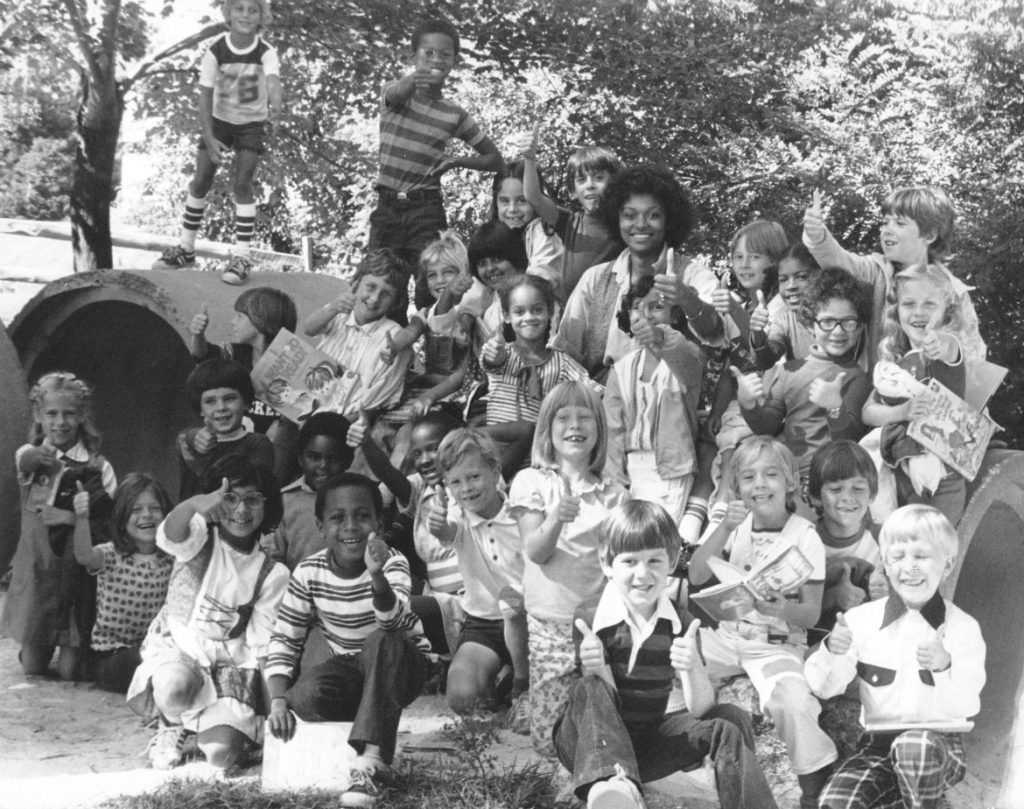
Outside Forces
Perhaps more important than the superintendent in the 21st century was the influence of outside forces. First, in 2001, Congress passed the No Child Left Behind Act, the most intrusive federal intervention in local schools in U.S. history. Then in 2002, the Maryland General Assembly passed the Bridge to Excellence in Public Schools legislation. It provided over the next decade a massive infusion of state dollars into public schools, resolving long-running court battles over the state’s failure to adequately support public education as required by the state constitution.
With the increased state funding and federal rules came new accountability measures, performance standards, testing and requirements for five-year plans to meet the heightened standards.
In addition to the legislative mandates, the county’s demographic mix was changing. Howard County, and particularly Columbia, was becoming more ethnically diverse, largely due to the attraction of many parents to the reputation of its fine schools.
Federal requirements for annual yearly progress in every school, new accountability for how the greater state dollars were spent, and a more diverse student body put new emphasis on tests, scores and reports. Howard County continued to shine, but there was a stress on quantifying its stellar achievements. This led to more mandated standardized tests at every level, and increasing complaints that “teaching to the tests” and the amount of time for the tests themselves were cramping teaching and learning.
A few years ago, as the problems with No Child Left Behind became apparent across the nation, a push came for uniform national curriculum standards, known as Common Core. Developed with foundation support by education experts in collaboration with the National Governors Association and state superintendents, the new curriculum was not technically a federal initiative, but the U.S. Department of Education dangled federal dollars to encourage states to implement it. Maryland was an early adopter, and stayed true to the program, while conservative political pushback led other states to abandon what they saw as federal overreach.
The goal of the new curriculum, known in Maryland as College and Career Ready Standards, was more in-depth study into fewer topics, with major shifts in the math and English/language arts curriculum. The new curriculum also required developing a new set of nationally standardized tests, in which Maryland took the lead.
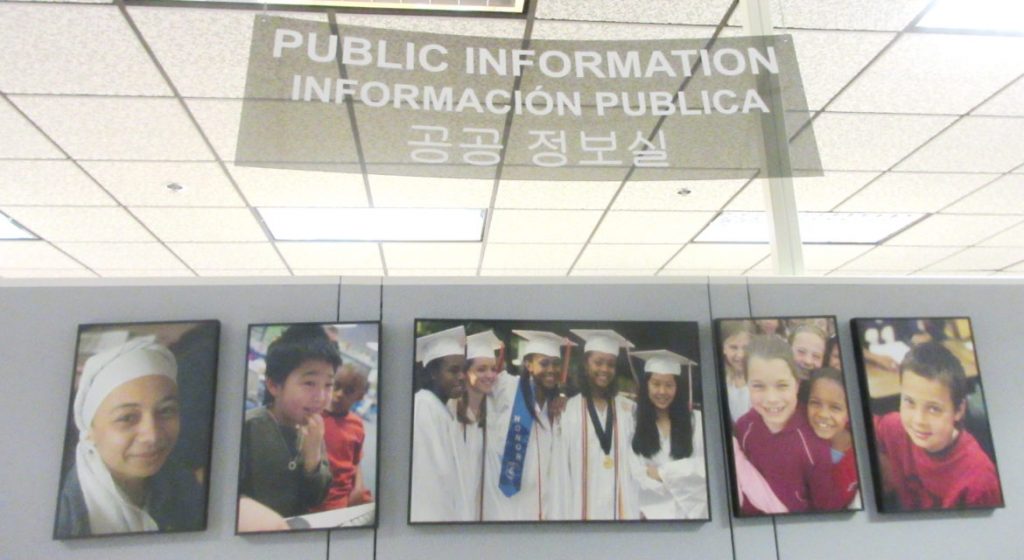
Into this constraining mix of strictures and tests, the Howard County Board of Education, now seven members large but still elected countywide, brought a new superintendent, the third in 12 years, after having just three chief executives in the previous 51 years. Renee Foose is the first woman to hold the job and had been deputy superintendent in Baltimore County, a principal in Montgomery County, a high school science teacher, and while she earned her education credentials, a Maryland state trooper.
Responding to all the external demands on the schools, Foose and the board produced a five-year Vision 2018 strategic plan that launched in 2013, a year after she arrived. It had four broad goals and “22 associated outcomes” and “103 strategies” to achieve them. Instead of the slim annual reports the school system had generated for decades, the three annual reports on Vision 2018 are thick, 106-page documents full of scores, charts, graphs and data-points on Howard County schools.
Foose’s progress in implementing the plan, meeting its goals and closing the achievement gap led the board to offer her another four-year contract this year. But there is vocal community disenchantment with Foose and the board, reflected in the results of this year’s election in which three incumbent board members seeking reelection lost their seats.
A state investigation, mandated by the legislature, of the board’s information practices, is nearly complete. There is an audit of its finances, initiated by the county council and resisted by the board, and a sharply critical audit of some of its financial practices by legislative auditors.
There is little question, even among current board members, that the board itself is factionalized and dysfunctional, and it would be no surprise if Foose doesn’t survive after the arrival of the new board members.
But all this, and much of this entire essay, is a top-down institutional narrative with little relation to what happens day-to-day in 76 schools with 54,000 children and their 4,100 teachers. Teachers teach and students mostly learn, and they learn about many more subjects in many more flexible ways than when Columbia started almost 50 years ago.
Perhaps the largest irony as we look at Columbia schools today is that the 1960s planners and consultants were concerned that the schools in Columbia needed to be a lot better than they were in the rest of the county at that time. In measurable ways, today they are worse.
As planned, Columbia has indeed become Howard County’s urban core, economically and racially diverse. Along with other pockets in the Route 1 corridor, Columbia has the county’s highest concentration of lower-income residents, living in aging (and thus lower-priced) apartments, condos and townhouses — but these “lower-middle-class” incomes are only in contrast to one of the top five highest median household incomes in the United States, the wealthiest nation on earth.
Demographics may not be destiny, but the schools in Columbia, depending on the housing mix, are generally 18–30% white, with high concentrations of African-Americans and growing numbers of Latinos. Columbia’s first neighborhood school, Bryant Woods, is 58% African-American, 11% Latino, and a Title 1 school based on concentrations of low-income students — 53% of the kids get free or reduced price lunches. Its standardized test scores are below county averages and even below state averages. There are fewer experienced teachers with advanced degrees.
Other Columbia schools have similar statistics. Foose and the school board have been trying to put more resources into these schools and close the achievement gap.
“I feel our fortunes rise and fall on the school system,” Courtney Watson said in October. Right now, “we don’t have a functional board.”
Next Month: Part 7: Health Care

MarylandReporter.com is a daily news website produced by journalists committed to making state government as open, transparent, accountable and responsive as possible – in deed, not just in promise. We believe the people who pay for this government are entitled to have their money spent in an efficient and effective way, and that they are entitled to keep as much of their hard-earned dollars as they possibly can.

